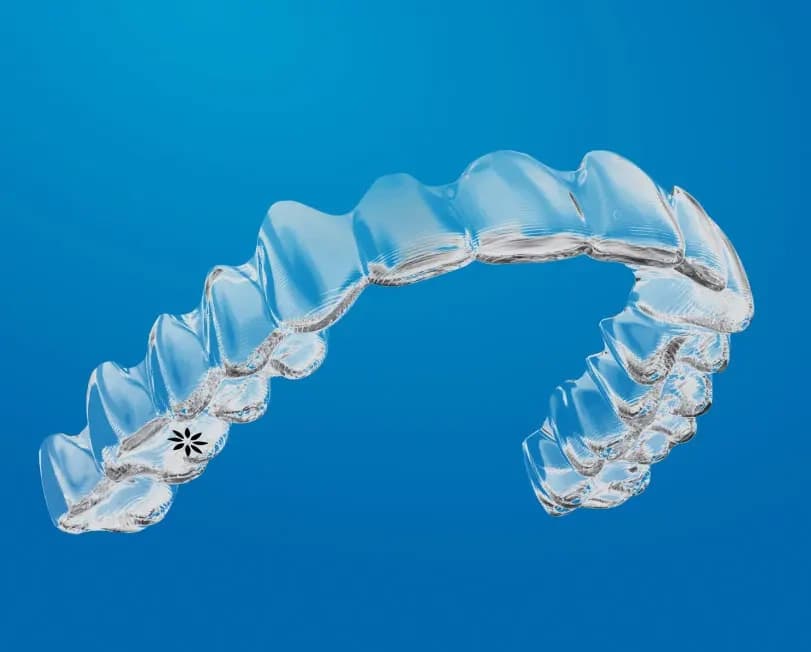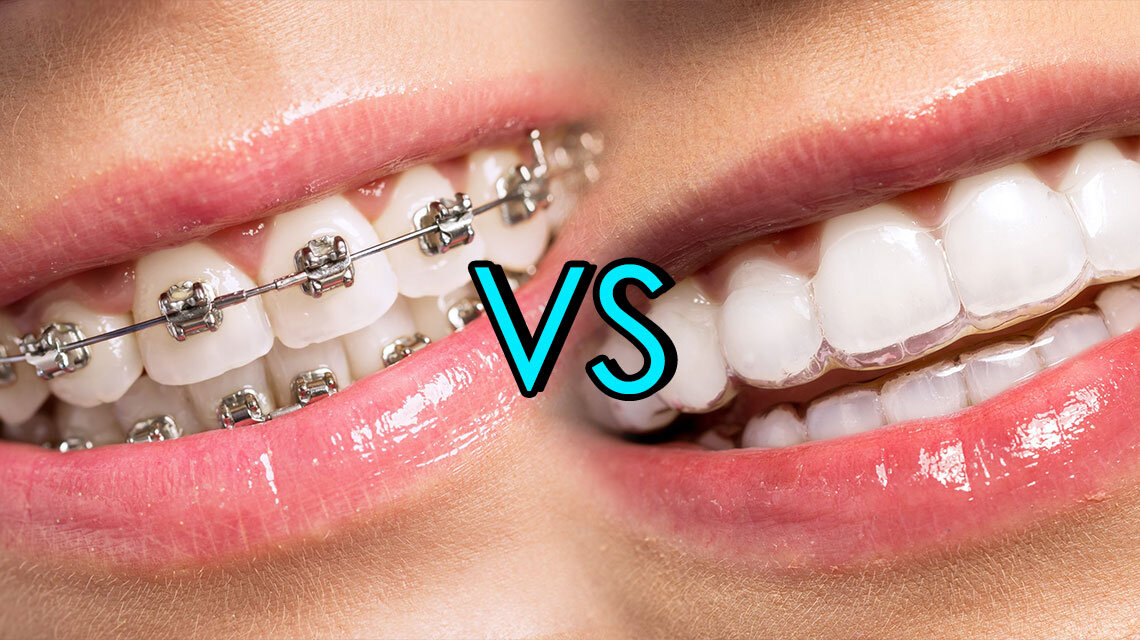Discover the Advantages of Invisalign for a Perfect Smile Makeover
Discover the Advantages of Invisalign for a Perfect Smile Makeover
Blog Article
Invisalign vs. Typical Dental braces: Which Alternative Is Right for You?
When considering orthodontic therapy, the option in between Invisalign and typical braces provides several vital aspects that merit cautious analysis. Invisalign supplies a very discreet alternative with detachable aligners, while conventional braces offer a much more visible yet effective solution for severe imbalance.
Review of Treatment Options

On the other hand, conventional dental braces are composed of metal braces and cables that are bonded to the teeth. This approach uses constant stress gradually to achieve positioning. While effective for complex orthodontic issues, traditional dental braces call for regular brows through for adjustments and can position difficulties in maintaining dental health due to the trouble of cleansing around braces and cables.
Both options have their merits, and the option commonly hinges on certain dental problems, lifestyle preferences, and client compliance. Inevitably, speaking with an orthodontic specialist is critical for determining one of the most ideal treatment strategy tailored to private requirements. Understanding the subtleties of each option can dramatically affect the general success of orthodontic therapy.
Aesthetic Considerations
A significant element influencing the choice between Invisalign and typical braces is the visual appeal each therapy offers. Invisalign aligners are crafted from clear plastic, making them basically unseen when put on.
In contrast, traditional dental braces contain metal brackets and cables, which can be more noticeable. While developments in orthodontic modern technology have brought about the advancement of smaller brackets and tinted elastics, conventional braces still preserve a more noticeable account. For some individuals, the exposure of braces might hinder them from seeking required treatment.
Eventually, the selection in between Invisalign and traditional dental braces might pivot on individual preferences relating to appearances. Patients that focus on discernment typically lean toward Invisalign, while those that are much less worried concerning visibility might select traditional braces. Comprehending the aesthetic ramifications of each option is vital for making an educated decision that aligns with one's lifestyle and preferences.
Comfort and Convenience

In regards to benefit, Invisalign aligners are detachable, enabling patients to enjoy their preferred foods without restriction and keep optimum oral health. Brushing and flossing are streamlined, as the aligners can be secured throughout these routines, whereas conventional dental braces need careful maneuvering around brackets and cables.
In comparison, standard dental braces necessitate regular changes, making them less hassle-free for those with hectic routines. Overall, the comfort and convenience of Invisalign make it an enticing selection for several people looking for orthodontic treatment.
Therapy Duration and Performance
While both Invisalign and typical dental braces work in dealing with dental imbalances, the duration of treatment can differ significantly between the two choices. Usually, Invisalign treatment can take anywhere from 12 to 18 months, depending upon the intricacy of the situation. The clear aligners work by slowly shifting teeth into their desired settings, and normal follow-ups with an orthodontist assistance ensure development continues to be on track.
In comparison, standard braces typically need a longer commitment, typically ranging from 18 months to 3 years. This is due to their set nature and making use of cords and brackets, which can be extra reliable for intricate instances and serious imbalances (Invisalign). The treatment efficiency of conventional dental braces is well-documented, as they permit for exact adjustments and greater control over tooth movement
Ultimately, the selection in between Invisalign and conventional dental braces may hinge on both the anticipated treatment duration and the particular oral problems available. Consulting with an orthodontist is vital, as they can give customized referrals based upon private requirements, making certain the chosen method aligns with preferred timeframes and results.
Price Contrast and Insurance Policy Choices
Price plays a significant duty in the decision-making procedure for people taking into consideration orthodontic treatment, whether opting learn the facts here now for Invisalign or traditional dental braces. Generally, the cost of Invisalign varieties from $3,000 to $8,000, while conventional dental braces generally cost between $2,000 and $6,000. Factors influencing these prices consist of the intricacy of the instance, the duration of treatment, and geographical place.
Insurance coverage can dramatically impact out-of-pocket costs. Many oral insurance policy strategies supply partial protection for orthodontic therapies, but the specifics can differ commonly. It is important for clients to evaluate their insurance coverage plans to determine the extent of coverage for either option. Typically, traditional braces might be extra frequently covered by insurance policy plans contrasted to Invisalign, which some insurance companies classify as a cosmetic treatment.
In addition, numerous orthodontic methods provide adaptable settlement plans, making read this article both treatment options much more obtainable. People must ask about prospective financing options and price cuts for in advance settlements. Evaluating the total price, including insurance coverage benefits and repayment plans, is vital for making an educated choice that lines up with both visual choices and spending plan considerations.

Conclusion
In recap, the selection in between Invisalign and typical dental braces hinges on several elements, including visual choices, comfort, treatment period, and price. Invisalign offers a discreet, detachable alternative that helps with oral hygiene and nutritional adaptability, while typical braces might be more appropriate for intricate oral problems and commonly come with a lower cost point. Inevitably, appointment with an orthodontist is important to assess specific scenarios and determine the most ideal treatment choice for achieving optimum dental positioning.
When thinking about orthodontic therapy, the selection between Invisalign and conventional dental braces provides a number of essential aspects that merit careful assessment.Contrasting Invisalign and standard dental braces exposes distinct therapy choices for orthodontic improvement.While both Invisalign and typical dental braces are reliable in correcting additional info dental imbalances, the period of therapy can differ substantially between the two alternatives.Cost plays a significant duty in the decision-making process for people thinking about orthodontic therapy, whether opting for Invisalign or traditional dental braces.In summary, the option between Invisalign and traditional dental braces pivots on numerous elements, including visual preferences, convenience, treatment duration, and cost.
Report this page